Although it feels wintry, the colours of spring brighten the edges of Curry Rivel. Pink cherry blossom appears at the roadside, the trees showering petals onto the pavement like confetti. At the green on the northern edge of the village daffodils line the verge outside the cottages and cluster in the sunlight between the graves of the churchyard, bobbing their heads in the sun.
St Andrew's is a grand old edifice that seems to preside over the rest of the village. It strikes me immediately how different it is from Low Ham which I wrote about in January. Here the church is bigger and in the heart of the community in a far larger village. In his book England's Thousand Best Churches, Simon Jenkins quotes the rector of Curry Rivel as writing about St Andrew’s that it was “incredible...that so small a village community can have constructed such a magnificent building”.
It’s early afternoon but the deep sounds of the organ are resonating from within. It is the organist, Patrick, doing his practice.
Unlike most churches I visit, I have a connection to St Andrew's. For over fifty years my grandparents lived in this village and were regular churchgoers here. They are buried next to a dry stone wall at the back of the graveyard. It is also where my parents were married, where my sister was baptised and where we would spend Christmas morning every year when I was growing up.
The church guide bought for a pound inside the door is priceless in its pocket guide history of the church. Most of it is compiled from “books, notes and records” compiled by the Revd John Simpson who was rector from 1980 to 1987. I remember him well.
A church was first mentioned here in the time of the Domesday Survey in 1086, although the present structure was probably built about 1500. The size of the building is an indication of the wealth of local families such as the de Lortis and Jennings clans who lived in the village.
Around the west end exterior of the church there are various figures. On two sides of the porch are two musicians both playing instruments, one a bagpiper sitting above the entrance with his cheeks puffed out as he plays. According to the guide, “bagpipes were used to accompany dancing in an age when we were known abroad as ‘the dancing English’”.
“Dancing in churchyards before gravestones was not unknown and might even have flowed into the church, then uncluttered by pews. In the absence of a parish hall, St Andrew's would have been the meeting place for various social activities.”
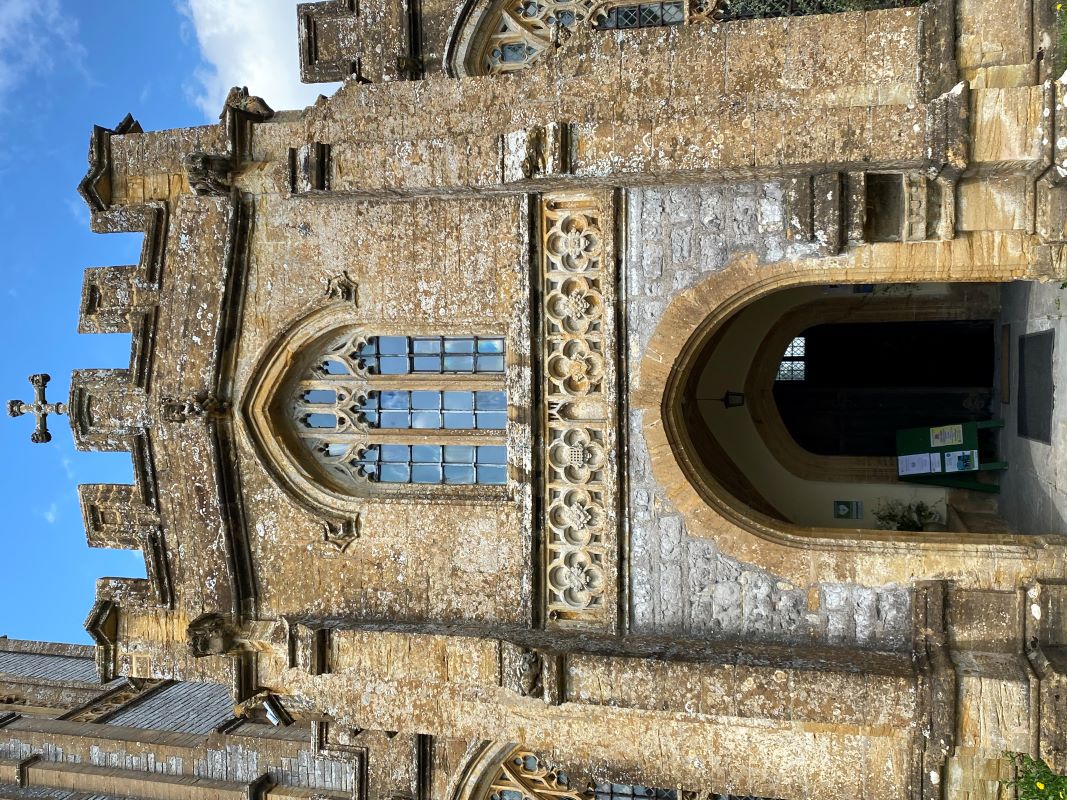 The entrance porch with its bagpiper above the window.
The entrance porch with its bagpiper above the window.
There are impressive and unusual features inside the church. The western window is richly coloured in gold, green, blue and red and is probably German glass and according to the guide “unlike any you are likely to see in any other Somerset parish church”. The fan vault underneath seems particularly grand for a village church and it's been suggested was built by the same mason who built the great vault under the central tower in Wells Cathedral.
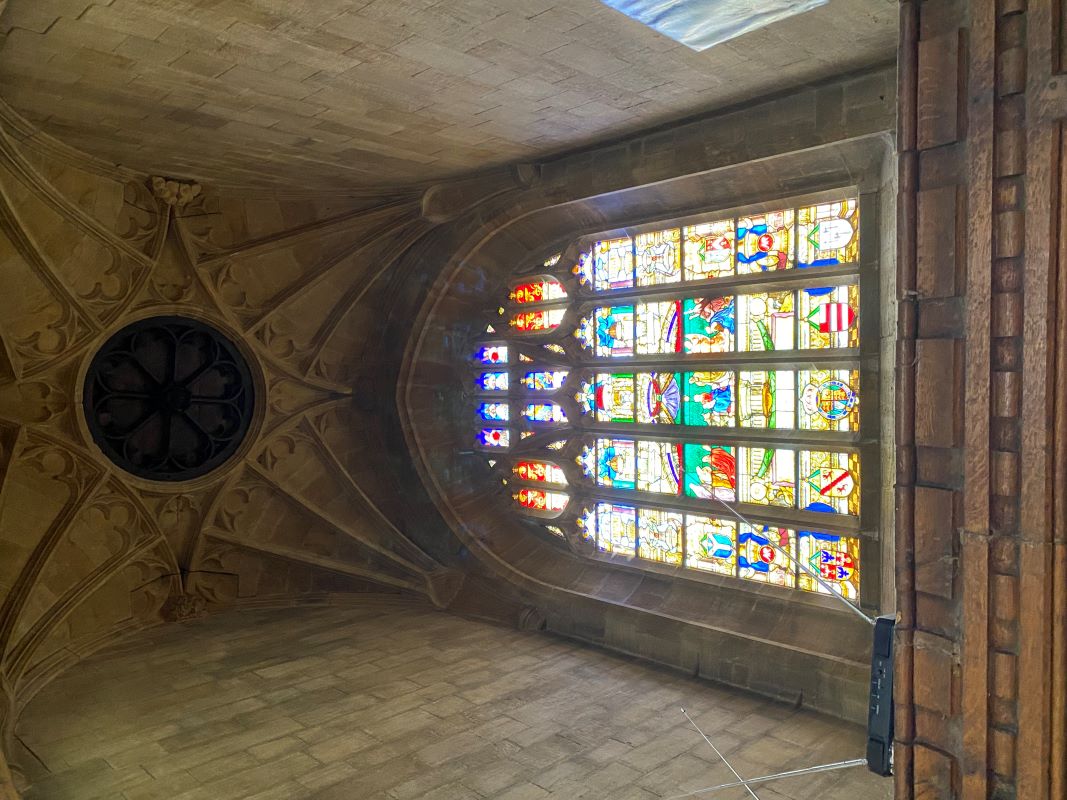 The west window and fan vault ceiling beneath the tower.
The west window and fan vault ceiling beneath the tower.
After the organist finishes the silence seems to descend heavily on the space before sounds of the outside world start to leak in. Pigeons coo drunkenly outside the south windows. There is the low roar of a distant plane. On a pew in front of me there is the indistinct shadow of a little bird flitting about on a branch outside the window above the font.
The north chapel, a large space to the left of the altar, dates from the end of the 13th century and is the oldest part of the building. For the next five hundred years this became the burial place for local families of importance. The effigies along the wall are thought to be of either Baron Henry de Lorti who died in 1242 or of his grandson Henry.
These solemn figures are – for now – hidden behind shelves of toiletries, tinned vegetables and other food products as this space is now used for the local food bank run by the Curry Rivel Community Group. Established at the start of the Covid pandemic, the community group was set up to support those who might be struggling in the local villages of Curry Rivel, Drayton and Hambridge. Although the group is separate from the church the congregation volunteer with it as well contribute to the cost of the food.
Lesley is one of the helpers at the food bank and tells me there are about 20 households in total who use it, some every week, some less often. There is also a “Winter Warmers” corner of the church donating warm clothes.
Above the door there is an old sign entitled “A list of donations to the poor of the parish of Curry Rivell”. It is a timely reminder of how the church has always been a place of charity as well as worship and social activities.
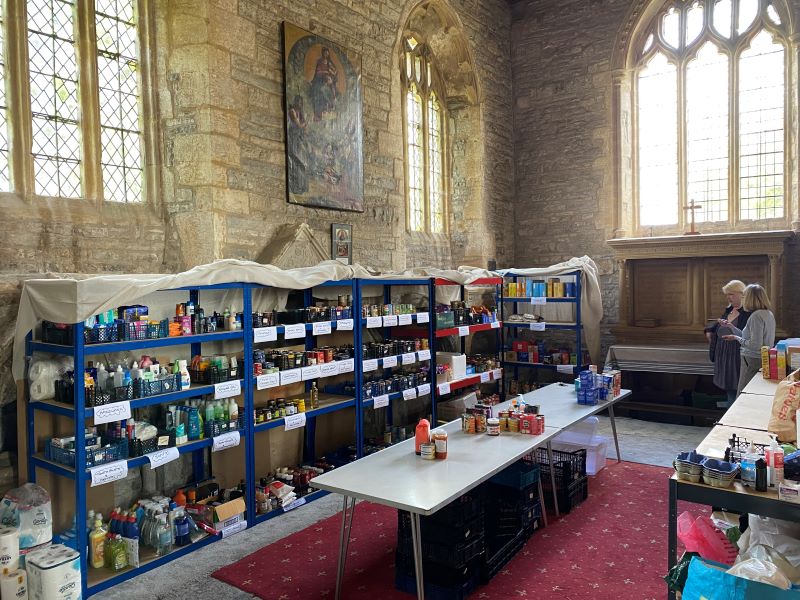 The north chapel food bank.
The north chapel food bank.
Two weeks later I find myself on a wet and windswept day paying a visit to the rector, Scott Patterson, and his training curate, Mark McKnight at the rectory opposite the east end of the church.
Scott, who is 52, is married with two daughters and has been here since 2013. He oversees Curry Rivel with a population of over two thousand as well as the smaller villages of Swell and Fivehead.
In terms of a regular congregation he says they now have a total worshipping community of about seventy. “So you won't find seventy on any given Sunday but you will find forty to fifty for our main services such as the all age family service,” which he hopes has something for all ages. “My role,” he adds, “is to try to meet the needs of most people most of the time.”
They also hold a regular communion service and a traditional Prayer Book Evensong. He is keen to stress the importance of more committed Christian growth through Bible study and fellowship groups too.
Scott makes it clear that it is a difficult time for rural churches. One of his greatest concerns is the decreasing numbers of clergy and how overstretched local ministers are becoming.
“Our deanery has faced cuts in clergy numbers and this benefice is about to expand by two parishes,” he says, meaning the benefice population will double. He says his greatest wish is to “develop relationships across our communities seeking opportunities for Christian witness but if I am spread ever more thinly practically speaking this becomes more difficult”.
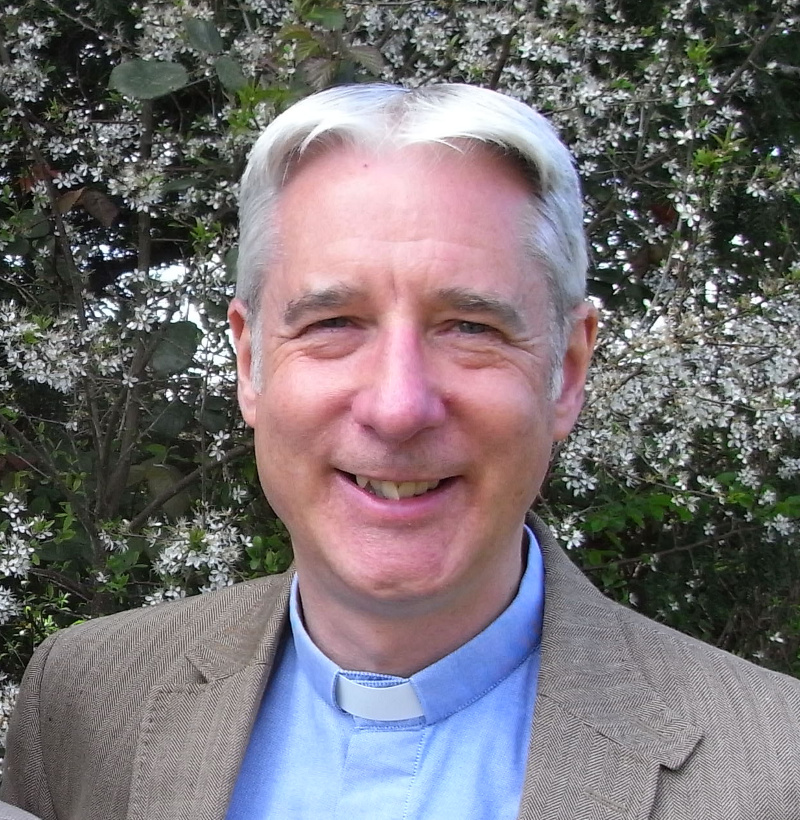 Revd Scott Patterson
Revd Scott Patterson
How does he think the church should adapt to meet these challenges?
“I think there is a growing need for Christian people to be seeking to develop their depth of Christian maturity and loving care of others in the community. Their role will increasingly include those things that might have historically fallen to the vicar – the pastoral visits, the friendships and the ‘can I pray with you?’ time.”
Scott says that they are continuing to invite members of the church to meet people in local residential care homes so that those same people can share a pastoral role in the future.
However, it is the upkeep of the church building that seems to present the greatest challenge, a theme that seems to persist wherever I go.
“The cost of the maintenance of our Grade I listed building is borne by the parish church council,” Scott tells me, and the costs “can be massive”. It is becoming, he adds, “an increasingly unfair burden”.
“At the moment we are in the process of trying to work though an eight year programme of £75,000 to look after the windows. That's not what we should be about as a Christian community. We're not the National Trust and the degrees of expertise and hours of time it takes to be trying to do this is a massive stone around our necks. There needs to be a nationwide shift in thinking with regards to its ancient church buildings. It's just not sustainable.”
Scott is keen to say how much he appreciates the building. “They are powerful buildings: there's something awesome about walking into that building that speaks of the God it's there for, but we could just as easily with our 40 or 50 people fit into the Old School Room [a room next door to the church] with nice comfy chairs and it's easy to heat and has kitchen and toilet facilities.”
However, both Scott and Mark are proud to be part of a long line of minsters that have had a connection with these buildings. Mark alludes to the board of vicars and rectors in the next door village of Swell where you can see a continuous line of ministers dating back to the 13th century. “You don't want to be the vicar who was the last person on that board who worshipped in that place.”
Curry Rivel has a buzzing and thriving community, Christian and secular, which makes good use of the mighty church of St Andrew's as enthusiastically as their predecessors did. Yet revisiting it has thrown up difficult questions. What role will the church play in the future of our rural communities? If it is to play a role does their need to be a rethink in the way the church is organised? And finally what does the future hold for the hundreds of historic church buildings that exist in every corner of the British Isles? By exploring the lives of other Somerset churches perhaps I might find answers to these questions.
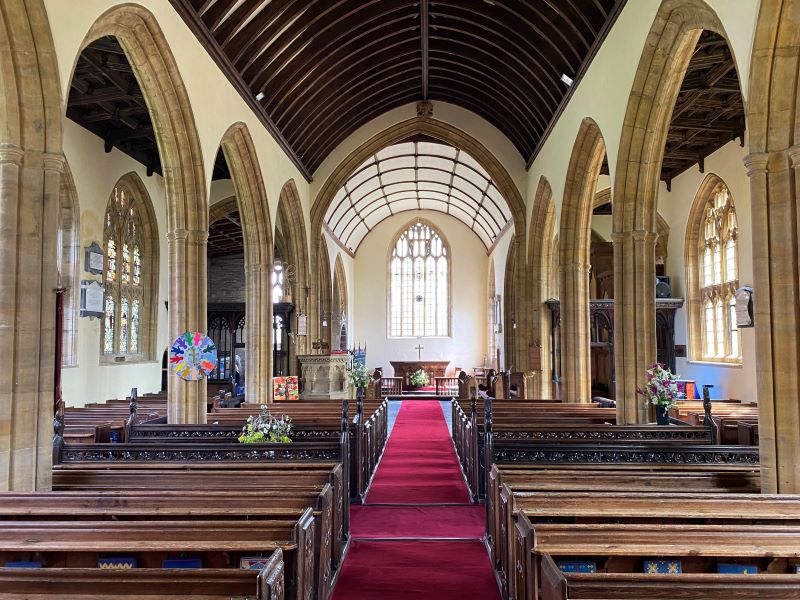 The nave of St Andrew's.
The nave of St Andrew's.

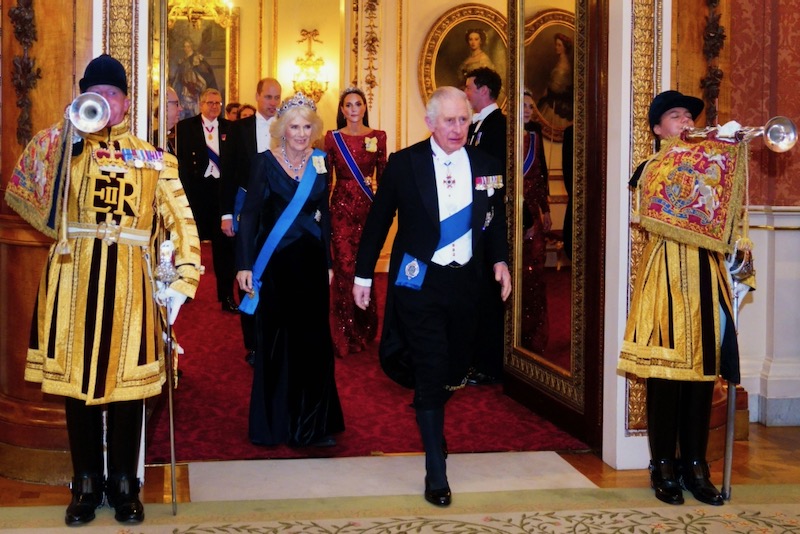
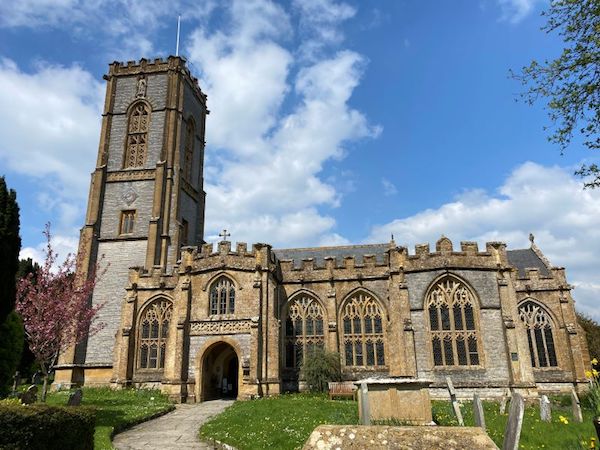
 Loading ...
Loading ...
What do you think?
You can post as a subscriber user ...
User comments (0)